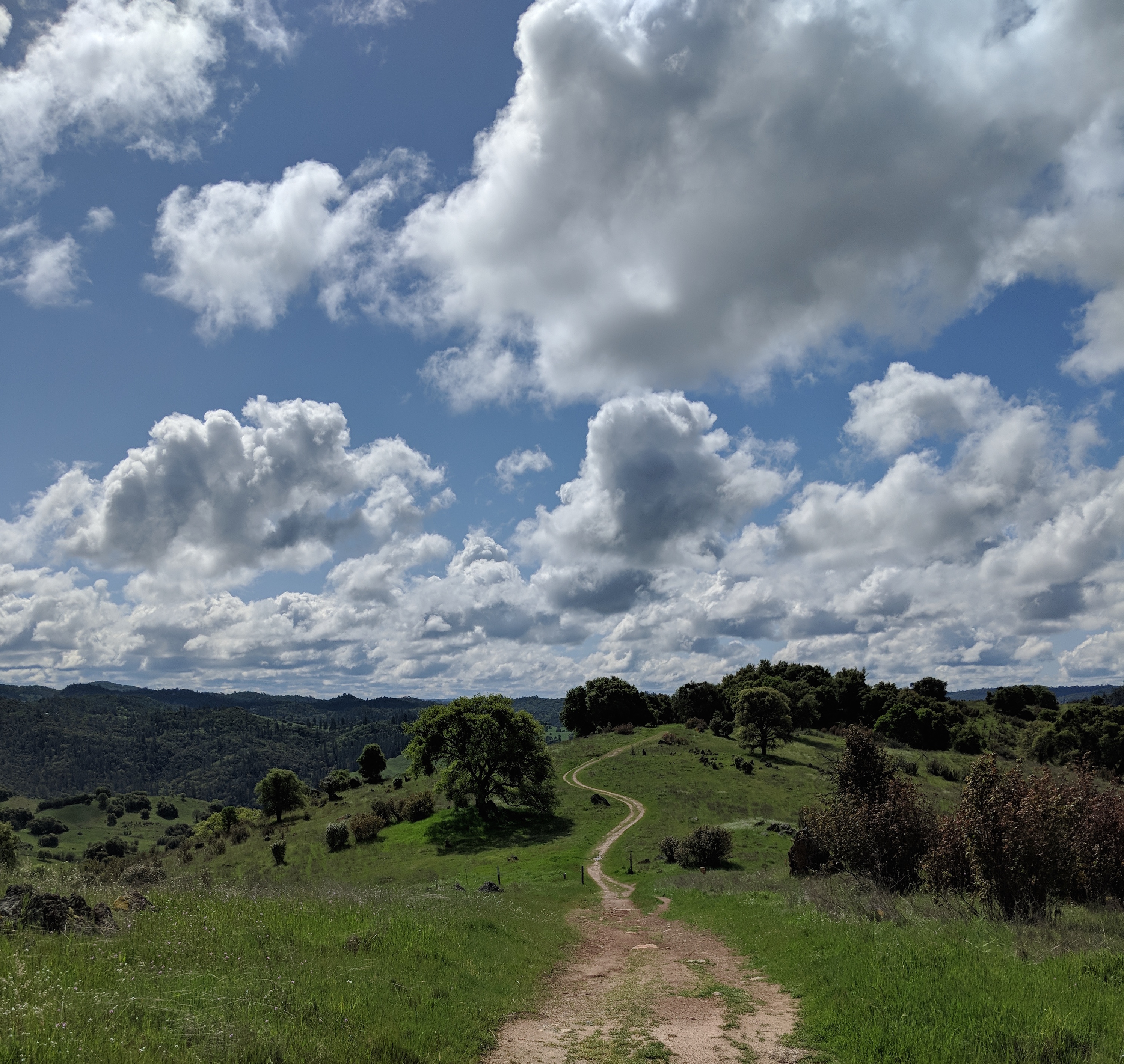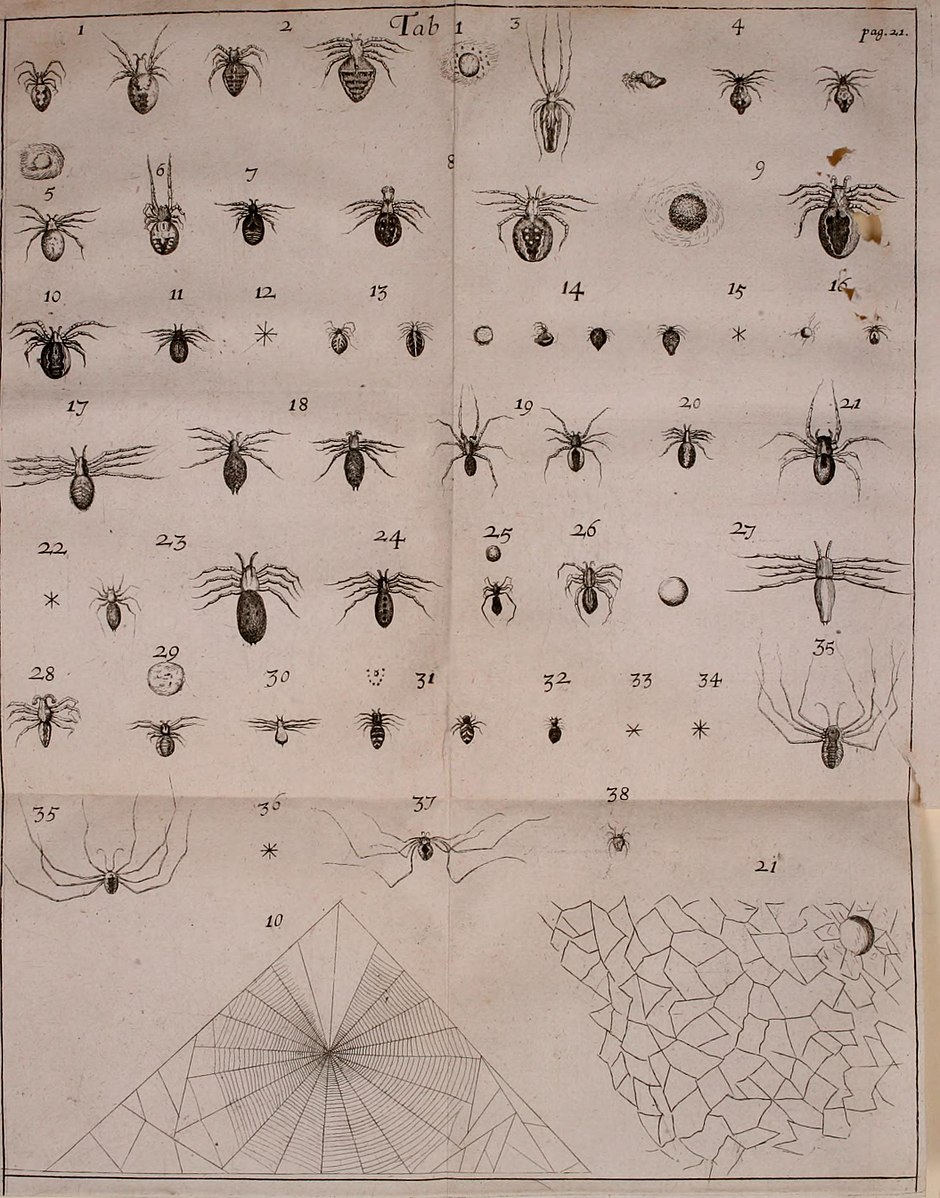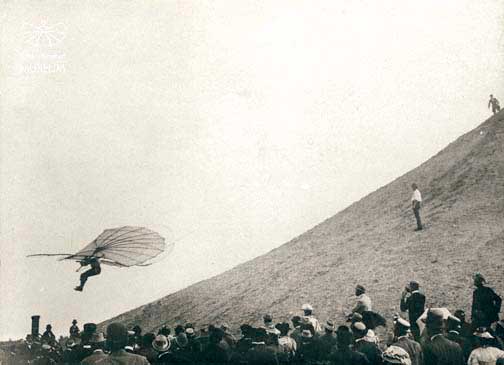It’s the spider time of year, the webs are everywhere and the little spiders are sneaking into the house. Sneaking is bad enough but then you learn that some spiders fly — paraglide, actually, crossed with hot-air ballooning. Just no. This post first ran on April 19, 2018.

Most spring days on my favorite walk, I watch a small group of people wearing packs trudge up a grassy hill. Once they reach the top they spread out colorful sails, put on harnesses and jog forward. The wing behind them fills with air and lifts them up, and they glide like birds above the California foothills.
Last week I saw a paraglider climb into the sky until his sail was a black dot wavering against bright-white cirrus clouds. Was he ok? Could he land safely? I never found out. But watching him disappear reminded me of a story I recently wrote about flying spiders.
The first person to describe flying spiders was a bewigged 17th century English naturalist named Martin Lister. A bit of a curiosity himself, Lister described how more than 30 different species of spiders molt and court. He counted their eyes. To give you a taste of the level of detail he captured over years of observation, here are a few chapter titles from his 1638 book The English Spiders:
Of the two-eyed spiders
Of the eight-eyed spiders
Of the diet of spiders, and their means of hunting; and also of wasps, the spiders’ enemies
Of sheet-web spiders that are satisfied with a very small web for catching prey within which they also build their nests
Of medicaments from spiders: For earache Lister recommended spiders steeped in olive oil or rosewater; for hysteria, wax salve of spiders applied to the navel. He also believed you could catch syphillis by eating venomous iguanas. You would not have wanted Lister to be your doctor.
People made fun of Lister. His fondness for arachnids “made him a favored target for satirists of virtuosi,” writes Palmira Fontes da Costa, an historian of medicine and natural history at the Universidade Nova de Lisboa in Portugal. Virtuosi was a common term for English scientists of the period, and wealthy gentlemen with too much time on their hands. One satirist even wrote a play about Lister, describing “a sot that has spent two thousand pounds in microscopes to find out the nature of eels in vinegar… who has studied these twenty years to find out the several sorts of spiders, and never cares for understanding mankind.”
Lister wasn’t discouraged by these 17th-century trolls. He urged his fellow naturalists to continue their work despite the fact that some “bespatted this kind of studie.” One fine day, he noted that some spiders will climb up to a high point on a tree branch or grass stem, and shoot out silk threads to catch the breeze.
This behavior, called ballooning, is now recognized as an important mechanism of spider dispersal. Spiders can balloon for hundreds of miles at high altitudes. This is probably how ghost spiders colonized the remote Robinson Crusoe Island 400 miles off the coast of Chile. In The Voyage of the Beagle, Darwin described a spider that, “while standing on the summit of a post, darted forth four or five threads from its spinners… then suddenly let go of its hold on the post, and was quickly borne out of sight.”
Newly hatched spiderlings balloon to escape being cannibalized by their siblings. Adult spiders seem to do it when resources are scarce, or to escape hazards. In the Rio de la Plata river basin in Argentina, for example, spiders often balloon en-masse to avoid rising floodwaters, enshrouding the trees and buildings where they land in silk.
Mysteries about ballooning still abound. It’s not clear, for example, how spiders decide when to fly and when to stay put. To find out, Moonsung Cho and colleagues from the Technical University of Berlin recently conducted an experiment with 14 large (Xysticus) crab spiders.
Serendipitously, the experiment took place in a park dedicated to Otto Lilienthal, a l9th-century German aviation engineer. Inspired by the wings of bats and seagulls, Lilienthal built some of the first human-powered gliders. He launched himself off a hill thousands of times – making it as far as 1000 feet — until one day a strong gust of wind crashed the glider, and Lilienthal broke his back and died.
Fans of the Glider King probably didn’t realize that the grass was crawling with more skillful aviators. But Cho and colleagues noticed that on warm autumn days the air in Lilienthal Park fills with glistening silks. They decided to catch some of the spiders and observe their pre-flight behavior. First, they put 14 large crab spiders on a mushroom-shaped platform exposed to the natural breeze. In a separate experiment, the researchers placed the spiders in a wind tunnel, where they could control wind speed and temperature with a hair dryer.
The spiders did not release their silks at random. Like paragliders, they tested the wind first, raising one or two hairy legs aloft for about 6 seconds. If there was a warm, gentle breeze no stronger than 3 meters per second, the spiders raised their abdomens and released up to 60 silk threads, forming a triangular sheet that fluttered in the wind and whisked them skyward.
Crab spiders carefully control when they launch. But like that paraglider I watched disappear, it’s not clear if they can control where they end up. “Sacrifices must be made,” reads the inscription on Lilienthal’s gravestone. Spiders seem to know this. Just watch how they tiptoe to the edge of the oblivion and — whoosh! — let go.
__________
Pilot Hill, California. Source: Emily Underwood
Spider illustrations by Lister from Historiae Animalium Angliae (1795) Source: Wikimedia commons
Lilienthal testing his glider c. 1895. Source: Wikipedia.
Video credit: Moonsung Cho and colleagues, Technical University of Berlin.

